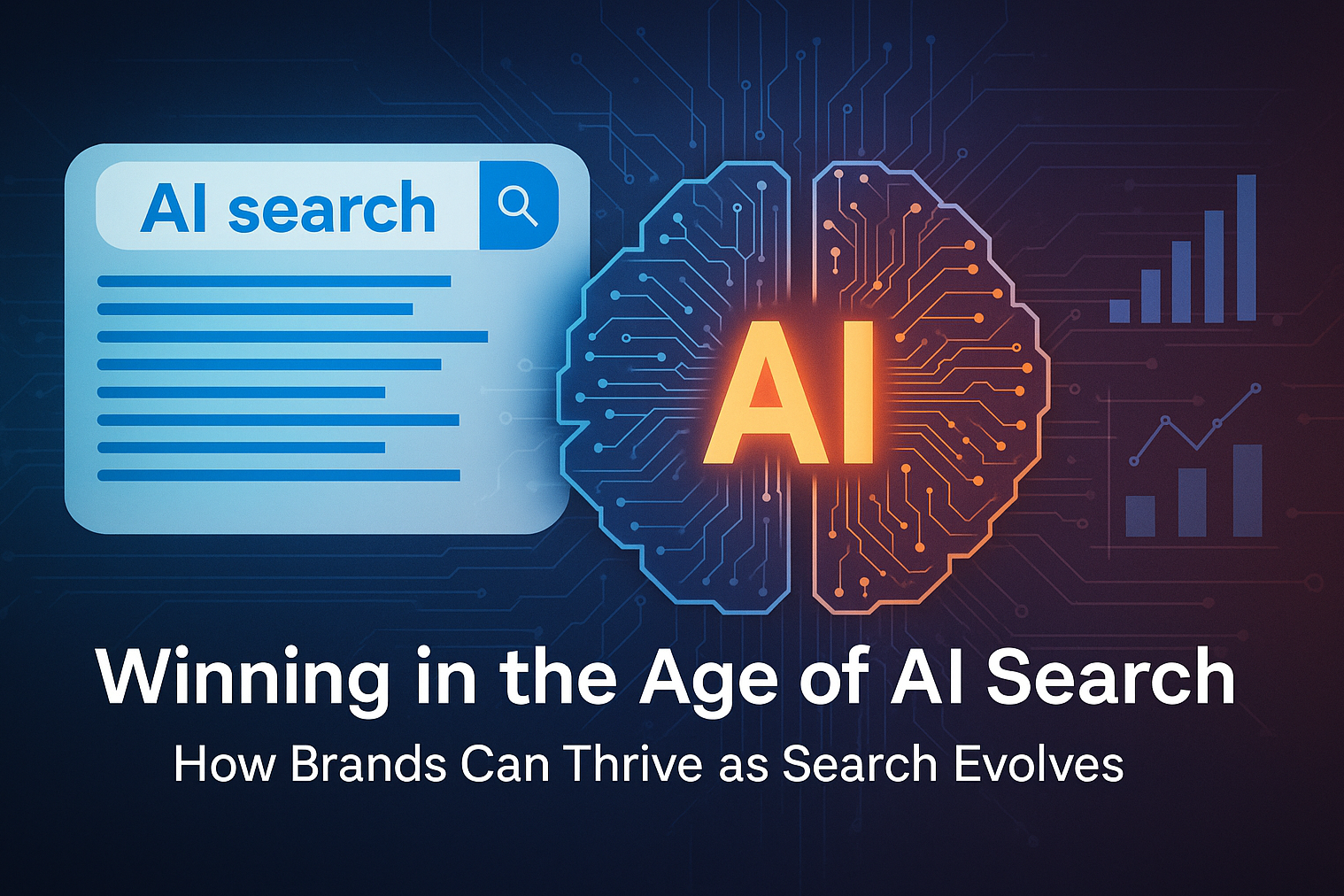Winning in the Age of AI Search: How Brands Can Thrive as Search Evolves
Search is changing faster than ever. With the rise of AI-powered features like Google’s AI Overviews and AI Mode, the familiar “10 blue links” are...
Read moreHow will Google's latest update impact your SEO efforts? Read our expert’s insights to learn what it is, how it works and how to create 'helpful content' online.
A Google SEO update can strike fear into the hearts of many marketers. The latest algorithm update, named the ‘Helpful Content Update,’ endeavours to rid search results of unhelpful content that only frustrates users. But how do you know if the content you’re writing is useful?
In our guide, we’ll talk you through:
Scott Skerritt - SEO Specialist
First launched in August 2022, the Helpful Content Update was released by Google to help its search algorithm better evaluate the quality of content.
The update’s aim was to reward ‘people-first’ content and devalue content written primarily for SEO purposes. It was preannounced by Google before rolling out a week later and took two weeks to implement.
Fast-forward a few months, and Google has now announced a second rollout of the Helpful Content Update, which is likely an adaptation of the first update. Google has not specifically said what it has changed. Instead it’s offered some advice to website owners on how it works and what it means.
Google’s official advice can be found in the link here:
Next week, we will launch the "helpful content update" to better ensure people see more original, helpful content written by people, for people, rather than content made primarily for search engine traffic. Learn more & advice creators should consider: https://t.co/fgf2TPNIqD pic.twitter.com/xOuX2iVk2d
— Google Search Central (@googlesearchc) August 18, 2022
Though frightening to many, the initial update did not have the impact everybody expected - many websites saw no change at all.
Perhaps the earliest sign of something similar was way back in 2011 when Google rolled out its Panda update. Initially just targeting English queries, the update later rolled out globally, and changed not only the results users were met with from Google, but the way SEO worked as an industry.
With the rollout of Panda, SEO had to adapt - stuffing a page full of keywords no longer got you to top spot. Marketers had to really think about what the intent behind a query was, and with the later Broad Core Algorithm Updates, it’s now nearly impossible to manipulate your way to the top if your content is poor.
As we mentioned earlier, the initial rollout of the update was perceived by many as huge. Many people working within SEO saw this update as another Penguin, Panda, or Hummingbird, but many were met with disappointment (or relief!) when the update did not impact their websites.
At this stage, it’s impossible to predict the impact that this update will have, and it doesn’t appear any major fluctuations are taking place, as has happened when many of the earlier Google updates have rolled out.
One thing to take from this second update though, is that website owners and marketers should be striving to create user-first content. By rolling out a second Helpful Content Update, Google is essentially declaring war on spammy and unhelpful content and, as such, marketing strategy should prioritise the user at every angle.
Charlotte Brindley - Content Executive
Now that Google’s Helpful Content algorithm update is in full swing, how do you write “helpful” content that both ranks highly, but also serves the user?
Below are our top five tips on how to write content that Google would approve of.
1. Answer the Question
Sometimes as writers, we can get lost in our craft. We focus on finding the perfect synonym, creating a harmonious rhythm, and using the right punctuation. However, no matter how beautiful the content is, if it doesn’t serve a purpose or answer a question, a user will bounce to another source.
When writing for an audience, you should always give them the answers that they’re searching for or help them find a solution to their problem. Put yourself in your audience’s shoes.
If you’re struggling for inspiration on what questions to answer, then looking at the People Also Ask section of Google will help provide some ideas. Alternatively, you could use a website such as Answer the Public,
2. Optimise Existing Unhelpful Content
If you’ve noticed that your rankings have dropped since the latest Google SEO update, then it’s time to revisit your existing content. Everyone loves a good sort-out, and the digital landscape is no different.
Comb through your existing blogs and landing pages. If they don’t serve a purpose and their sessions and rankings are low, then unpublish them. If your content has a low word count, then could you combine the pieces to create a more in-depth guide? Ensure that your content is always up-to-date and relevant.
3. Find Your Niche
Google loves a niche.
With the Helpful Content Update, Google wants every site to have a primary purpose or focus. If you’re trying to appeal to multiple audiences across multiple topics, then not only is that unhelpful to visitors, but it can also be confusing for search engines trying to understand the site.
Pick out certain USPs and build your content around one subject area. If you're writing for clients, then this can be tricky. Ensure you discuss with your client the importance of becoming an expert in one area. This conversation needs to happen before any content is written or optimised, so everyone is on the same page.
4. Provide a Great User Experience
Content that provides a positive UX experience is essential. UX is one of the most important search engine ranking factors because Google wants to give its users the best possible experience.
For a better visual experience, incorporate visual elements with videos or images that aid the user in their understanding. Make your content easy to skim read with numbered lists or bullet points. For longer content, include a table of contents, so they can easily navigate to the bits they want to read.
5. Demonstrate First-Hand Experience
It's more important than ever to create valuable, high-quality content thanks to the Helpful Content Update. Google values first-hand experience, in fact, it recommends you ask yourself:
If you write content about topics you have no experience in, your content won’t be as helpful as it could be. Users want to read in-depth answers that they can’t get anywhere else.
Ultimately, Google's Helpful Content Update is the latest Google update that ensures users get a positive experience with their platform and your site. By sticking with the principles of writing relevant content, in a niche that you can speak with authority on, you will naturally fall on Google's good side.
Talk to our experts to find out how you can create a helpful, user-centric content plan that accelerates your site's performance and UX.
Photo by Jonas Jacobsson on Unsplash
More articles you might be interested in:

Search is changing faster than ever. With the rise of AI-powered features like Google’s AI Overviews and AI Mode, the familiar “10 blue links” are...
Read more


Arming yourself with the right tools to ensure a smooth site migration is important - find out how to protect your SEO during a migration today.
Read more
Google employees have recently announced that the upcoming Google Core Update is set to be released in the coming weeks. Understanding and addressing...
Read more
Language matters. Any marketer worth their salt knows this. But when discussing gender and sexual orientation, that importance is amplified tenfold.
Read more
When marketers think of thought leadership, there are names rather than ideas, that tend to spring to mind.
Read more
With the release of GPT-4, how revolutionary will this tool be? Alan Rowe takes us through it...
Read more